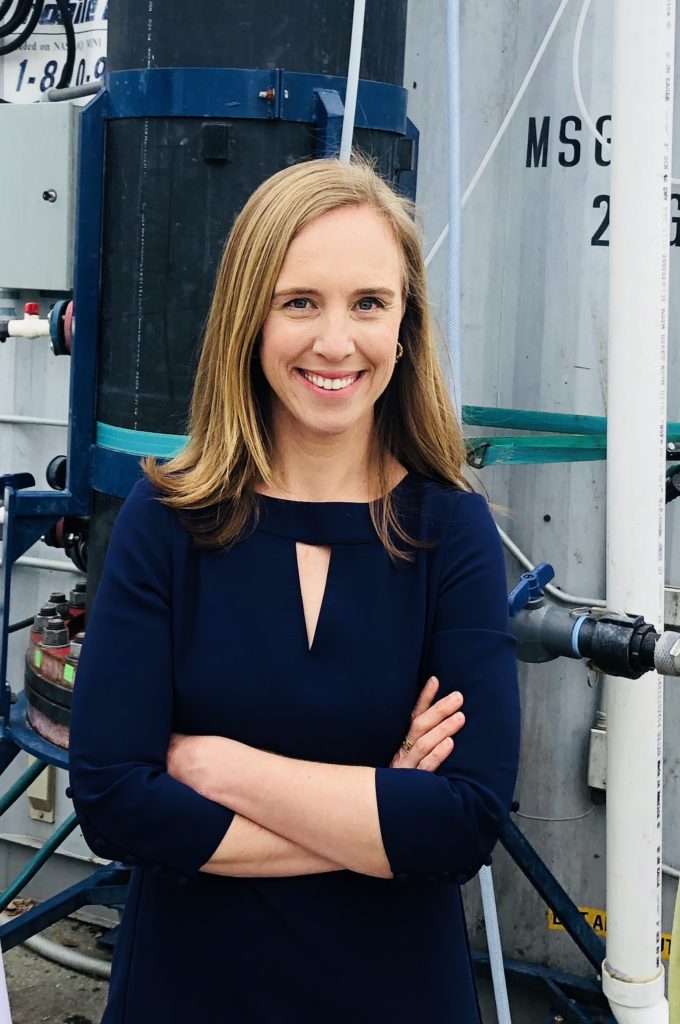Evrnu, Mango Materials and re:newcell
3 Startups to Watch in The Material Innovation Space
Manufacturers and consumers are accustomed to using traditional materials such as polyester, cotton and cellulosic fibers. The fact is that we are facing two major problems: shortage of raw materials, and serious pollution caused by burning and accumulating waste materials. We believe that innovation is the key to solving these problems. The three startups that we introduce in this feature – Evrnu, Mango Materials and re:newcell change the conventional consumption of materials by using cutting-edge solutions that they have developed.

CEO of Evrnu
ABOUT EVRNU
Evrnu is a textile innovations company that has invented an entirely new kind of engineered fiber made from discarded clothing with extraordinary performance and environmental advantages.
CAN YOU PLEASE TELL US ABOUT EVRNU'S PRODUCTS?
Evrnu is an R&D service company that works with brands/retailers and their supply chain partners to deploy technologies that breakdown old textiles for the creation of new textiles. Evrnu is unique in that our fibers create end products that are designed to be broken down and regenerated multiple times in a way that offers the same or higher quality than the original form. NuCycl is our first technology and a brand that represents all fibers that can be garment recycled. Our cotton technology breaks down 95% cotton or above. we essentially clean it, purify it and convert it into a pulp. The pulp can be sold to fiber producers that currently make fiber from wood pulp. We have additional technologies that are in development, all made from waste, recyclable or both. Our technologies have a significant impact reduction on air, water and soil.
WHAT IS THE MISSION OF EVRNU?
We provide solutions for some of the biggest issues threatening the textile industry. We have realized that we possess the expertise and know-how to build products and create technologies that will help to modernize our industry and reduce the impact on natural resources.
HOW CAN INNOVATIVE MATERIALS INFLUENCE THE FUTURE?
"Zero waste" is the most important property that innovative materials can have on the future. Now, even if there are delays in the process, all textiles will eventually fall into the landfill or incinerator. When they enter the landfill, they produce methane - a gas that is twenty times more powerful than carbon dioxide. If no methane is produced, then our product directly contributes to massive environmental win.
WHAT IS THE BIGGEST CHALLENGE THAT EVRNU IS NOW FACING?
The biggest challenge is that the industry may not be as R&D intensive as it needs to be in order to keep up with the changing landscape. The workforce within the supply chain has not been given the funds, time or resources to develop the appropriate innovations. We are seeing this change now with the unified focus on projects that reduce global environmental impact.
ABOUT MANGO MATERIALS
Mango Materials produces a naturally occurring biopolymer from waste biogas (methane) that is economically competitive with conventional oil-based plastics. The Bay Area company is comprised of a first-class team of engineers, scientists, entrepreneurs and innovators.

WHAT PROBLEMS ARE MANGO MATERIALS TRYING TO TACKLE?
Mango Materials uses greenhouse gas methane to produce a biodegradable material. We have focused our works on replacing polluting, traditional plastics, developing formulations for injection molded, film and fiber extrusion.
WHAT INSPIRED YOU TO START A NEW BUSINESS IN THE MATERIAL SECTOR?
The unsustainable proliferation of plastics pollution and the usual take-make-waste model needs to end. When I learned that bacteria in nature already make a biodegradable polymer with similar properties to traditional plastics, I knew there was an opportunity to change the narrative of the plastics industry and make a difference.
WHAT IS THE IMPACT OF INNOVATIVE MATERIALS ON SOCIETY?
Innovative materials that use waste as a resource can drive a circular economy with positive environmental impacts. If we can keep materials continuously in play, then we can eliminate the concept of waste.
WHAT IS THE BIGGEST CHALLNEGE OF WORKING IN THIS R&D INTENSIVE INDUSTRY?
The biggest challenge is blazing our own trail because we're doing things that have never been done before.

ABOUT RE:NEWCELL
Founded in 2012 by a group of researchers and entrepreneurs, re:newcell is a Swedish textile recycling company that has developed a cutting-edge technology for recycing used cotton and other cellulosic fibers.
WHAT IS THE MISSION OF RE:NEWCELL?
re:newcell has developed cutting-edge technology for recycling used cotton and other cellulosic fibers, The process converts textile waste such as used jeans and worn t-shirts into biodegradable Circulose® dissolving pulp, which is then used to produce new high-quality textile fibers at an industrial scale. With re:newcell's unique patented technology, the fashion industry can reduce CO2 emissions, water, chemical, land consumption, and greatly extend the use of earth's resources. re:newcell will Launch Circulose® as a retail product in early 2020 in collaboration with a number of selected brands.
HOW DOES RE:NEWCELL REDUCE THE ENVIRONMENTAL FOOTPRINT OF THE FASHION INDUSTRY?
The global population is growing and becoming increasingly affluent. As the balance of the world economy shifts and more people move into the middle-class, we are spending more on clothes and replacing them at an even faster rate. The waste, precious cellulose from cotton and wood, mostly ends up in landfill or is burned. Due to the lack of water and land, cotton production cannot cater to the ever-increasing demand for cellulose fibers, and the competition for timber resources between different industries is also becoming more intense. At its current state, fashion is an industry that is not sustainable, and its damage to the climate and environment must be reduced. How do we achieve this goal on a large scale? We believed that there has to be a way to harvest the cellulose in the textile waste that isn't used today and turn it back into the textiles that consumers need. So we founded re:newcell to close the loop and make fashion sustainable.
WHY ARE INNOVATIVE MATERIAL SO IMPORTANT?
Our approach to extracting and refining materials is the key to saving humanity and achieving long-term prosperity. In a fossil-free and environmentally sustainable future, everything we eat, burn, build and wear will have to be made from materials grown above ground at a scale that supports a global population of 9-10 billion people. This will be impossible if we don't find new ways of extending the life of materials already harvested from the Earth. Innovative materials will change our production model from a linear consumption to circular economy model.
WHAT IS THE BIGGEST CHALLENGE THAT RE:NEWCELL IS NOW FACING?
The biggest challenge is probably to attract the volume of capital needed to achieve impact at the scale that we're going for. People like tech companies because they're asset-light and don't need that much money to get going. But we don't want to be just another little niche player in the sustainable materials world, there are already plenty out there that are doing great work. We want to build industrial-scale recycling plants all over the world as quickly as possible, and do what the paper industry has done - go from 0% to 58% recycled content production in about 30 years. For that to happen, we need investors with financial stamina and clear vision.